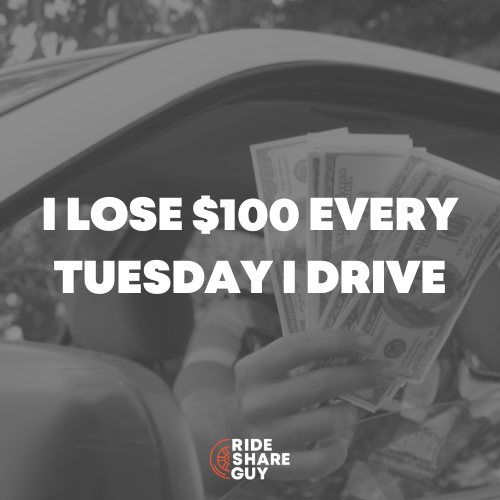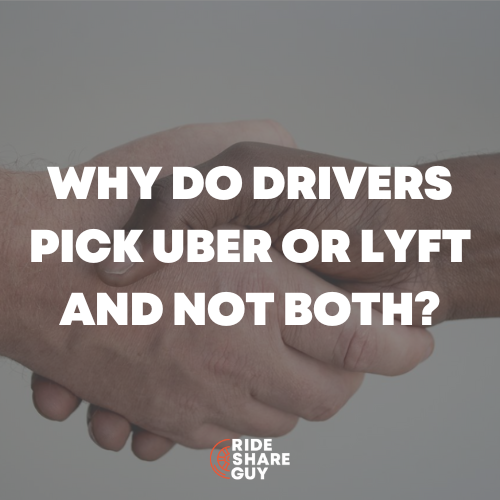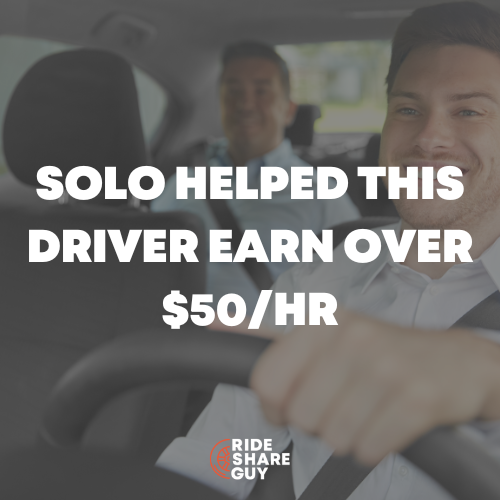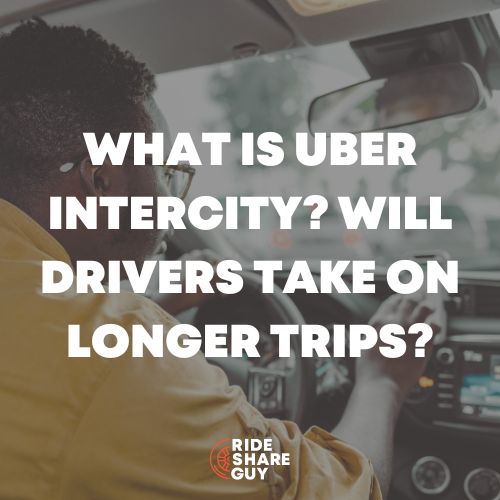Have you ever wondered what it’s like to be an Uber driver in other parts of the world? Today we have a guest post from Angelo, a London Uber driver. Is driving in London as simple as signing up for Uber and turning on the app? Not quite!
As always, guest posters receive $100 for sharing their story with us. Do you have an interesting or helpful story you’d like to share with your fellow drivers? Then fill out this form and we’ll get in touch with you!
London streets have been dominated by the iconic black cab since the late 1800s. For the last 120 years, tourists and Londoners alike have hailed black cabs to get around the busy streets of London. But in recent years there has been a young contender nibbling at their heels. In 2012, Uber launched in London and has gradually grown from a small annoyance for the black cabbies to now, a serious threat.
Becoming a black cabbie has always been notoriously difficult. Taking between 3-5 years to complete, with over 25,000 roads to memorise, ‘The Knowledge’ has been dubbed the hardest taxi test in the world. However, with the emergence of Uber in the last few years, that barrier to entry is no longer there, as almost anyone and everyone can download the app and start picking up rides.
Or so I thought. I decided to become a London Uber driver, and this is my story of what I learned while driving for Uber in London.
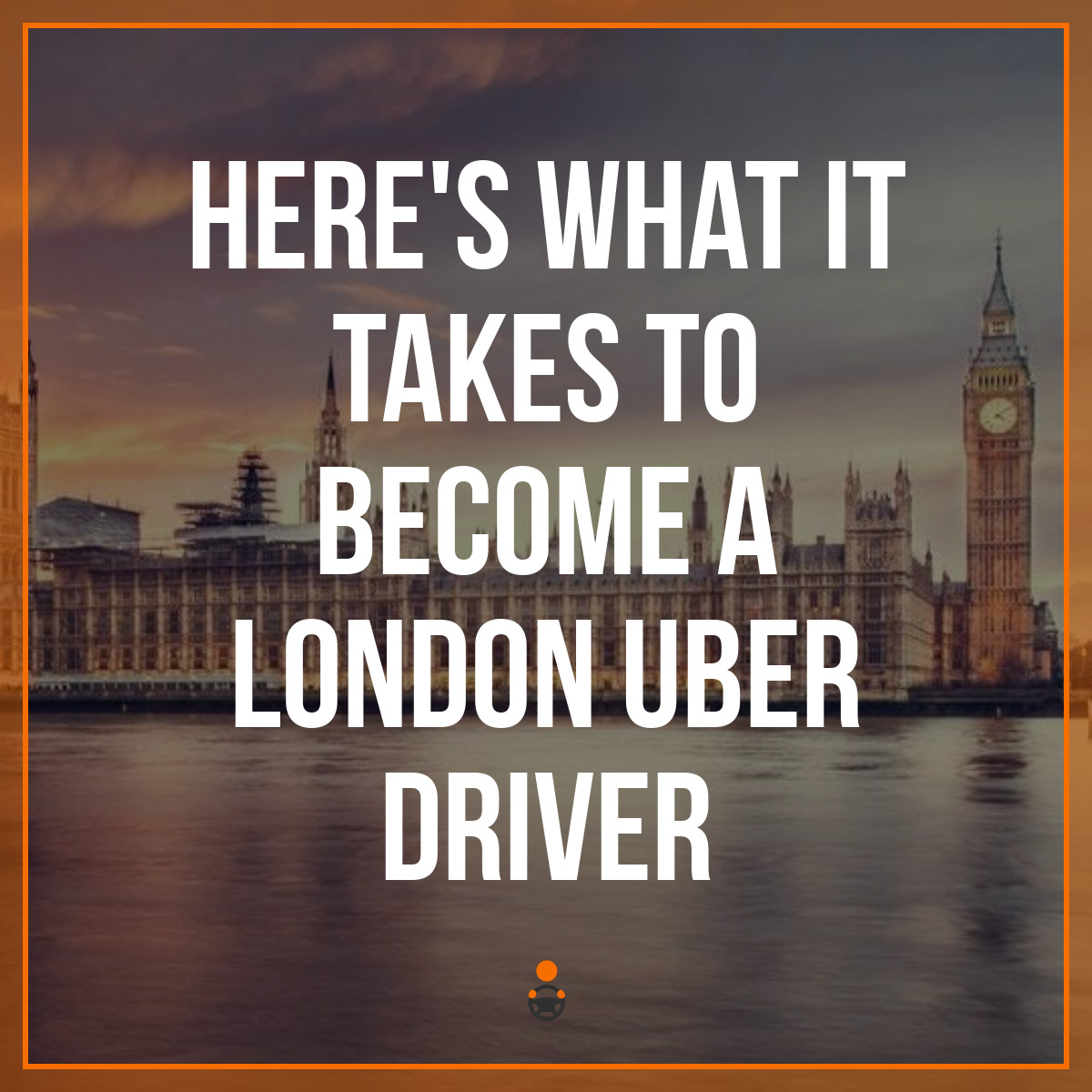
Becoming a London Uber Driver
Uber has done a great marketing job selling the dream. I mean, who doesn’t want to be their own boss, earn great money and set their own schedule? And it gets better. Gone are the days of wasting 3-5 years to pass ‘the knowledge’. According to Uber:
“Sign up today and you’ll be on the road in no time. Plus, signing up takes less than 4 minutes. Don’t wait to start making great money with your car.”
Call me naive, but I was sold. I have always looked for a second job to supplement my income but finding something to work around my full time job and commitments as a husband with three young children has never been possible. They had me hook, line and sinker. So, excited at the prospect of earning extra cash as an Uber driver, I decided to pop down to the Uber offices for an ignition session to get me signed up and ready to go.
After waiting for two hours in what seemed like a job center for recently released convicts, I was ushered into a room to be told that the first thing I needed to do was to carry out criminal check, which has to be done online. The Uber ignition session was a complete waste of time, but at least I managed to pick up a booklet with a very brief guide. Due to the lack of information, I decided to document the process to give budding drivers a proper step-by-step guide on how to become an Uber driver in London and what to expect.
Want to Become a London Uber Driver? Here’s What to Know
The first thing anyone sold on the Uber dream needs to understand, is that you have to make an investment of time and money before you can start earning. From start to finish it took me over 8 months to be issued with the Transport For London (TFL) licence, which is what is needed before Uber can onboard you. Having spoken to other drivers, that seems to be about the average length of time required, although for many it can be a lot longer.
This licence also isn’t cheap and you do need to be prepared to invest some money. The cost of getting licenced is between £550-£750 (roughly $700-950) depending on if you have an English language certificate or not.
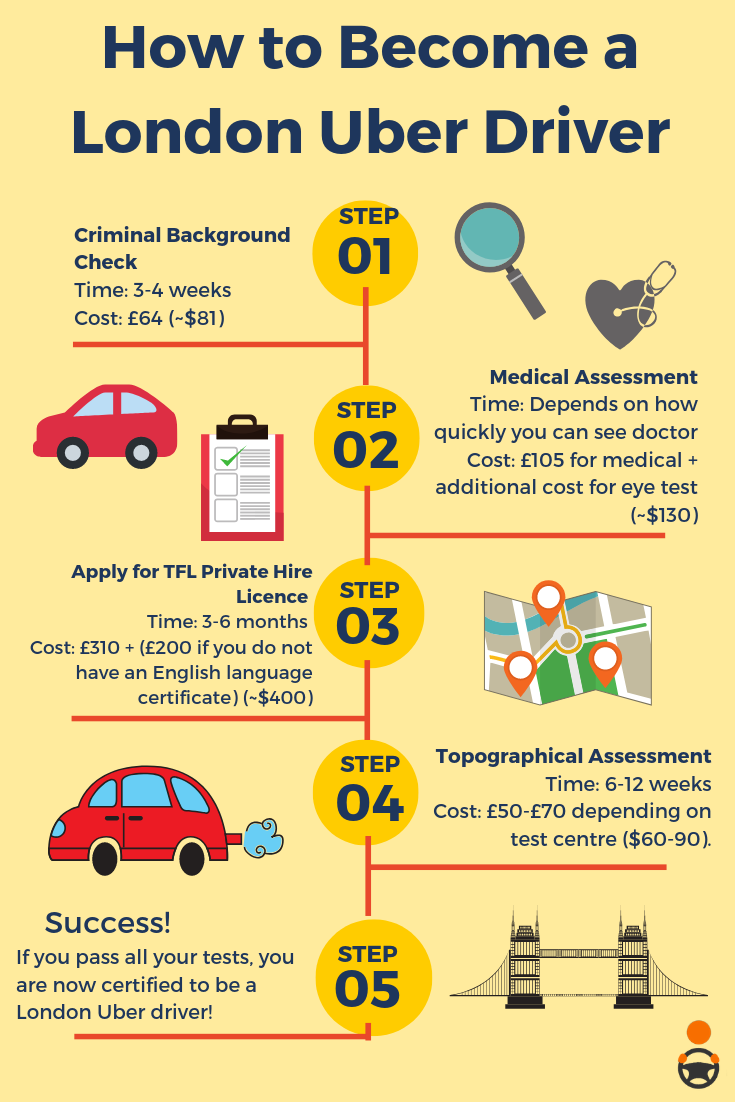
STEP 1 – Criminal Background Check Time Frame – 3-4 weeks. Cost – £64 (~$81)
The first stage of applying for a TFL Private Hire Licence is completing an enhanced Disclosure and Barring Service check (DBS) online. All potential drivers have to go through an enhanced background check, which searches your record for any criminal convictions, cautions, warnings, reprimands as well as searching the adult or children’s barred lists to check that you are suitable to work with these groups. Local police are also able to add any information they have on file which they feel is relevant along with any other reasons you may not be suitable for working with the general public as a Private Hire Driver.
Because of the enhanced nature of the background check, it can take between 3-4 weeks to get the all clear, so it’s advisable to book a medical assessment with your local doctor in the meantime so as to not delay the next process of the application.
STEP 2 – Medical Assessment Time Frame- Dependant on how quick you can get a doctor’s appointment. Cost – £105 for medical + additional cost for eye test (~$130)
Stage two of the application involves checking that you are medically fit to drive passengers. This is done through a PCO Medical Examination, otherwise known as a TPH/204.
In the medical examination you will be asked questions on the health of the following systems of your body: cardiovascular, endocrine, muskuloskeletal, neurological, psychiatric, vision. I was actually looking forward to getting a full medical examination, especially as it was costing me £105, but it is literally a box-ticking exercise which will take no more than 20 minutes.
STEP 3 – Applying for the TFL Private Hire Licence Time Frame – 3-6 months. Cost – £310 + (£200 if you do not have an English language certificate) (~$400)
Stage three of the application is where you officially apply for your TFL Private Hire Licence. This can be done online and involves scanning all the relevant documents. One of the requirements is having an academic certificate to prove you have a good grasp of the English language.
This is a big hurdle for any potential drivers who were not educated in the United Kingdom, as they will have to pass an English language test. This adds another £200 to the cost of the licence, plus further delays.
STEP 4 – Topographical Assessment (Map Reading Test) Time Frame- 6-12 weeks. Cost – £50-£70 depending on test centre ($60-90)
Soon after you submit your application for your TFL Private Hire vehicle licence, you will receive an email inviting you to book your topographical assessment (map test). The waiting list for an available date to take the test could be at least two months, which is frustratingly long but at least gives you an opportunity to study, ensuring you pass the test the first time round. The topographical assessment is the final hurdle between you and your TFL PHV licence. It is also the most important, as it is a test that you can fail.
Importantly, you only get two attempts at passing this test, and if you fail the test twice you will have to re-apply for your licence again, setting you back months and having to pay all the fees again.
The assessment will test all aspects of map reading skills:
1. Using indexes to identify points/locations
2. Using a map to identify directions and points/locations
3. Planning a route between two locations
4. Demonstrating knowledge of compass points within directional based questions
In a world of satellite navigation and GPS, this topographical test is completely irrelevant, outdated and more of a common sense test. With that being said, at least half of all people fail to get the minimum pass mark of 60%, so it isn’t as straightforward as you may think. It could take 3-4 weeks to receive your results, and if you have hopefully passed, it will be another 6-12 weeks to receive your licence after that.
At this stage the whole process starts to feel like the experience of undertaking home renovations. The project inevitably takes a lot longer than you initially predicted. It ends up being full of unexpected hurdles that you could never have imagined to begin with. You have gone way over budget, with the whole thing costing more than you thought it would. However, you’ve started, invested so much time, effort, energy and money, that you have to see it through to the end.
The Licence Finally Arrives
My licence to drive finally arrived, and while I’m greyer and balder than I was when I first started the application, it’s okay. My golden ticket is here and I’m rearing to hit the road.
Unsurprisingly though, there seem to be a few more roadblocks in the way. First, the diesel workhorse I was planning to use to comfortably ferry my passengers around London is no longer a viable option.
To help improve air quality, London has now introduced Ultra Low Emission Zones (ULEZ) meaning that any diesel car registered before 2015 will have to pay a daily charge of £12.50 per day to drive into central London and from October 2021. This zone increases to the surrounding boroughs of London. ULEZ will be in effect 24 hours per day with an £80 fine for anyone who doesn’t pay the daily fee, so there really is no escaping it. Additional to the daily ULEZ charge is the £11.50 congestion charge to drive into central London which Private Hire drivers are no longer exempt from.
So, in spite of the high commission and low rates charged by Uber, us London drivers potentially have another £24 ($30) to pay on a daily basis to be able to pick up passengers at the busiest spots. The solution would be to go full on electric, as they are exempt from ULEZ, as well as the congestion charge, but they are still very expensive to buy and the lack of range would be a constant worry and annoyance for me. I guess for now, I’ll stick to the Prius, which is as a Hybrid is exempt from the ULEZ charge, and I’ll also avoid central London between 7am and 6pm Monday to Friday to avoid having to pay the congestion charge.
Any money saved there could go towards paying the £2500 – £3000 (~$3100-3800) yearly insurance, which is mandatory in the UK to insure the car for private hire!
Being a London Uber Driver is More Than Turning on an App
As you can see, becoming an Uber driver in London is no joke. We are not competing against the cabbies for the title of ‘the hardest taxi test in the world’, but it is still a serious commitment. Do I regret getting my private hire licence and am I bitter against Uber for selling me the dream? Heck no!
I’m sure I’ll get comments saying I won’t be as enthusiastic after a few thousand more rides under my belt and maybe they’ll be right. But for now, the flexibility this gig allows me is like no other, and the headache and investment it took to get here has definitely been worth it.
Readers, what questions do you have for Angelo about being a London Uber driver?
I’m Angelo, a health and fitness fanatic father of 3 and owner of appdriver.co.uk, a website dedicated to helping new drivers get on the road and earning money as quick as possible. Follow me as I share my journey driving for Uber around my full time job.
-Angelo @ RSG
